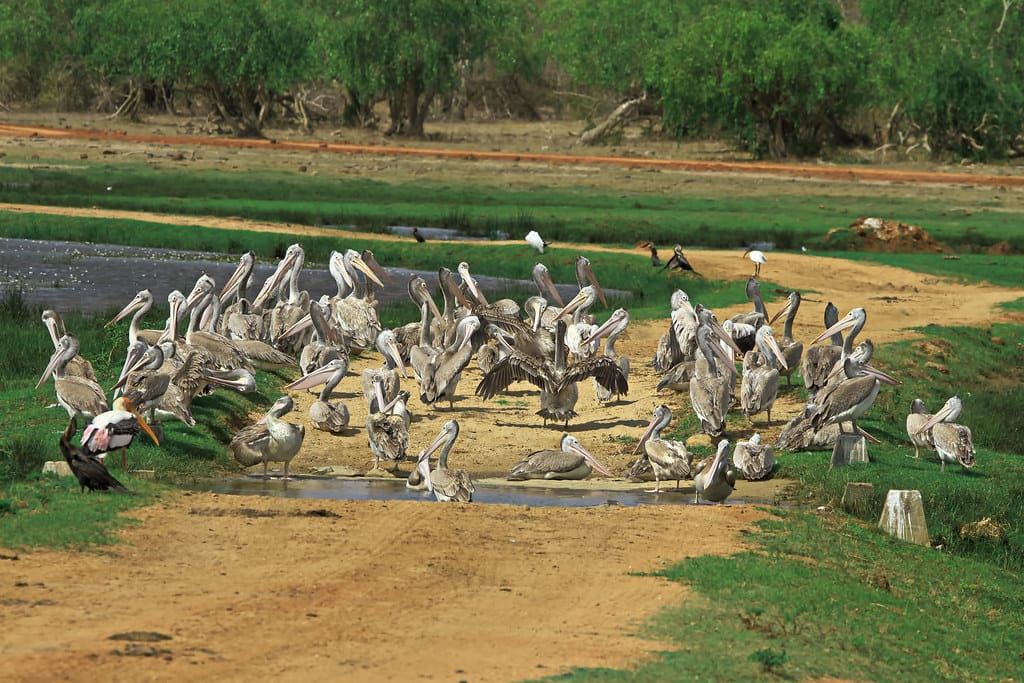Kumana National Park

Nestled on the southeastern coast of Sri Lanka, Kumana National Park offers a serene escape from the bustling crowds of Yala National Park. While it may not have the same high density of animals as its more famous neighbor, Kumana boasts a unique charm and tranquility that make it a must-visit destination for wildlife enthusiasts.
A Birdwatcher's Paradise
Kumana is particularly renowned for its diverse birdlife. The park's 200-hectare Kumana Bird Reserve is a haven for avian enthusiasts, attracting birdwatchers from around the world. The mangrove swamp here is home to a wide variety of species, including rare birds like the black-necked stork. Visitors can witness the breathtaking spectacle of bird nesting during the months of May and June.
Common sightings throughout the park include the Malabar pied hornbill, green bee-eaters, painted storks, and blade-headed orioles. With over 50 bird species often visible during a single outing, even amateur birdwatchers can have a fulfilling experience. Don't forget to bring your binoculars and a bird field guide to maximize your enjoyment.
Spotting Elephants and Leopards
While Kumana is primarily known for its birdlife, it also offers opportunities to spot larger mammals. Elephants and leopards are occasionally seen roaming the park, although sightings are not as frequent as in Yala. However, the thrill of encountering these majestic creatures in their natural habitat makes the journey worthwhile.
Entering the Park: Logistics and Practical Tips
The main entrance to Kumana National Park is located near Okanda, approximately 22 kilometers from the popular coastal town of Arugam Bay. Most visitors arrange jeep safaris through their guesthouses in Arugam Bay, which typically cost around Rs 10,000 per vehicle for a 3.5-hour trip, inclusive of park fees. For the best wildlife viewing experience, schedule your trip for dawn or dusk when the lighting is ideal, and the animals are most active.
While the park office near the entrance also offers jeep services, arranging your trip through a guesthouse can be more convenient, especially during the busy season. The mandatory guide, typically a seasoned wildlife spotter, will help you discover the park’s hidden treasures. Tipping for excellent service is always appreciated.
Costs and Park Fees
Like most national parks in Sri Lanka, Kumana's entry fees can be a bit complex. Expect to pay around US$10 for adults and Rs 250 for vehicle hire, plus an 8% VAT and a small service charge per group. While some tours offer all-inclusive fees, organizing the trip yourself can be slightly more affordable, though availability of jeeps during the high season can be limited.
Additionally, there are modest exhibits at the park entrance where visitors can learn about the park's history and ecosystem while waiting for their vehicle or guide. The lagoon hide near the entrance offers birdwatching opportunities while the jeep is being arranged.
Photography and Viewing Platforms
Kumana's landscape is nothing short of breathtaking, with lush greenery, open plains, and picturesque wetlands. Watchtowers scattered throughout the park provide a panoramic view of the surroundings and excellent vantage points for photography. The park's rich biodiversity and stunning sunsets make it a photographer's dream.
For those seeking a peaceful wildlife experience, away from the typical tourist trail, Kumana National Park offers a memorable escape into nature's embrace. Whether you're there for the birds or hoping for a glimpse of Sri Lanka's elusive leopards, the park promises an adventure that's both serene and exhilarating.
